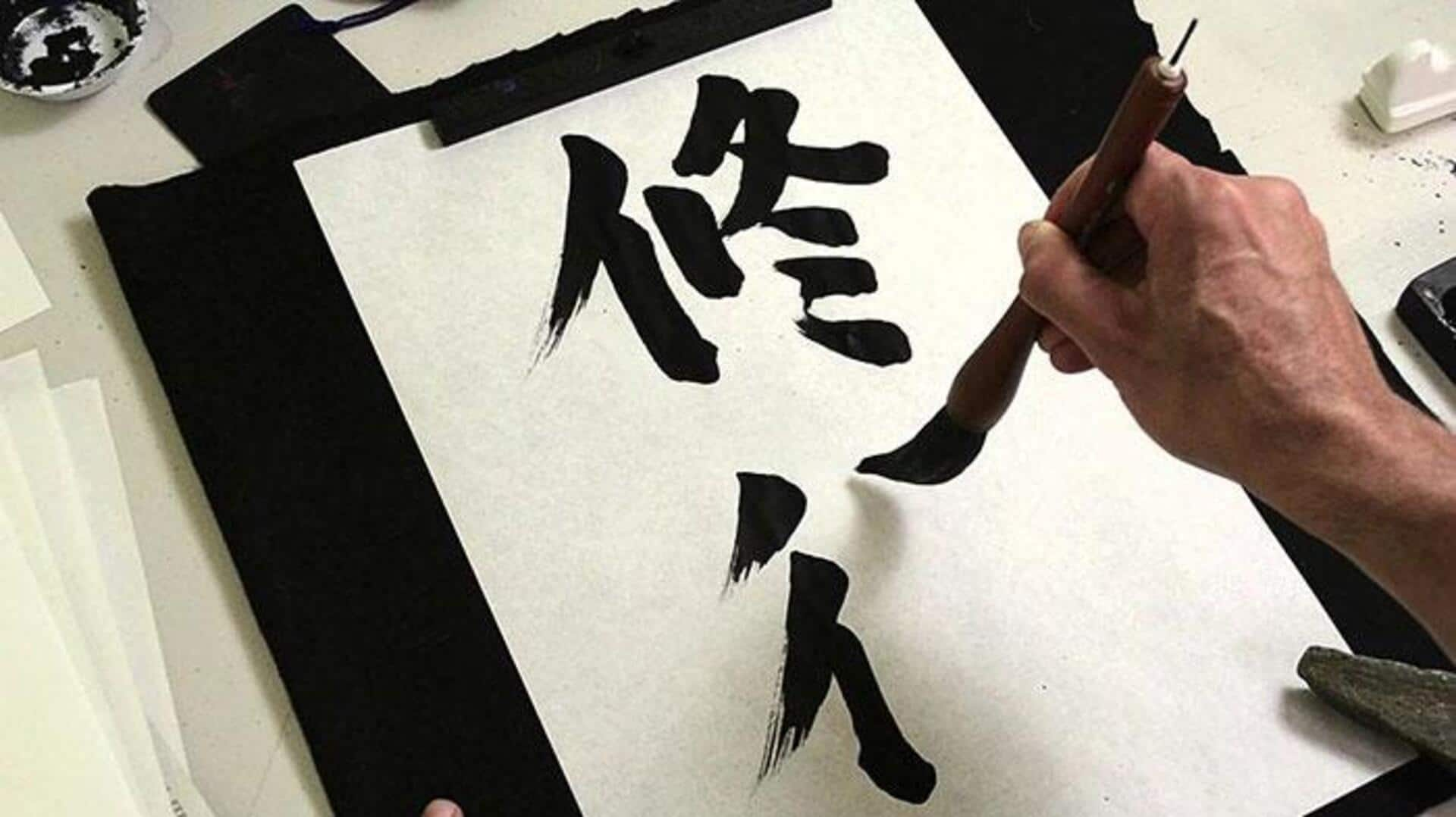
5 unique aspects of Japanese calligraphy culture
What's the story
Japanese calligraphy, or shodo, is an esteemed art form, intertwining beauty with discipline. It isn't merely about inscribing characters but also the act of expressing emotions, and encapsulating the very essence of words. This cultural practice has been inherited through generations, showcasing Japan's rich history and artistic roots. Here are five unique facets of Japanese calligraphy culture that showcase its importance and depth.
#1
The importance of brush strokes
In Japanese calligraphy, the brush stroke is the most important. Each stroke has to be made with precision and fluidity, as it reflects the artist's inner state. The pressure exerted on the brush determines the thickness of lines, giving the writing a dynamic visual effect. Mastering brush strokes takes years of practice, highlighting the need for patience and dedication in this art form.
#2
The role of ink and paper
The materials used in shodo are paramount to its execution. Traditionally, ink is made by mixing soot and water on an inkstone, giving varying shades of black. The paper used is often rice paper or washi, which absorbs ink differently than regular paper. These materials add to the texture and appearance of each piece.
#3
Symbolism in characters
In Japanese calligraphy, each character is filled with deep symbolism that extends beyond its literal meaning. Artists carefully choose characters not just for their looks but also for their philosophical significance. This intentional selection adds several layers to their work, allowing viewers to enjoy the aesthetic beauty of it while contemplating the rich, underlying meaning these symbols have to offer.
#4
Zen influence on calligraphy practice
Zen Buddhism has had a major impact on Japanese calligraphy by encouraging mindfulness during practice sessions known as hitsuzendo. Practitioners concentrate completely on each stroke without being distracted by outer thoughts or worries—a meditative technique that improves the skill of concentration while allowing the artist's creativity to flourish within the boundaries of tradition.
#5
Seasonal themes in calligraphic works
Japanese calligraphers often include seasonal themes in their work, reflecting nature's cycles. Cherry blossoms in spring and snowflakes in winter, for example, add depth and meaning, connecting the audience emotionally and visually. These themes, common across Japan's landscape and history, create a seamless balance between artistry and nature, widely practiced and appreciated globally.